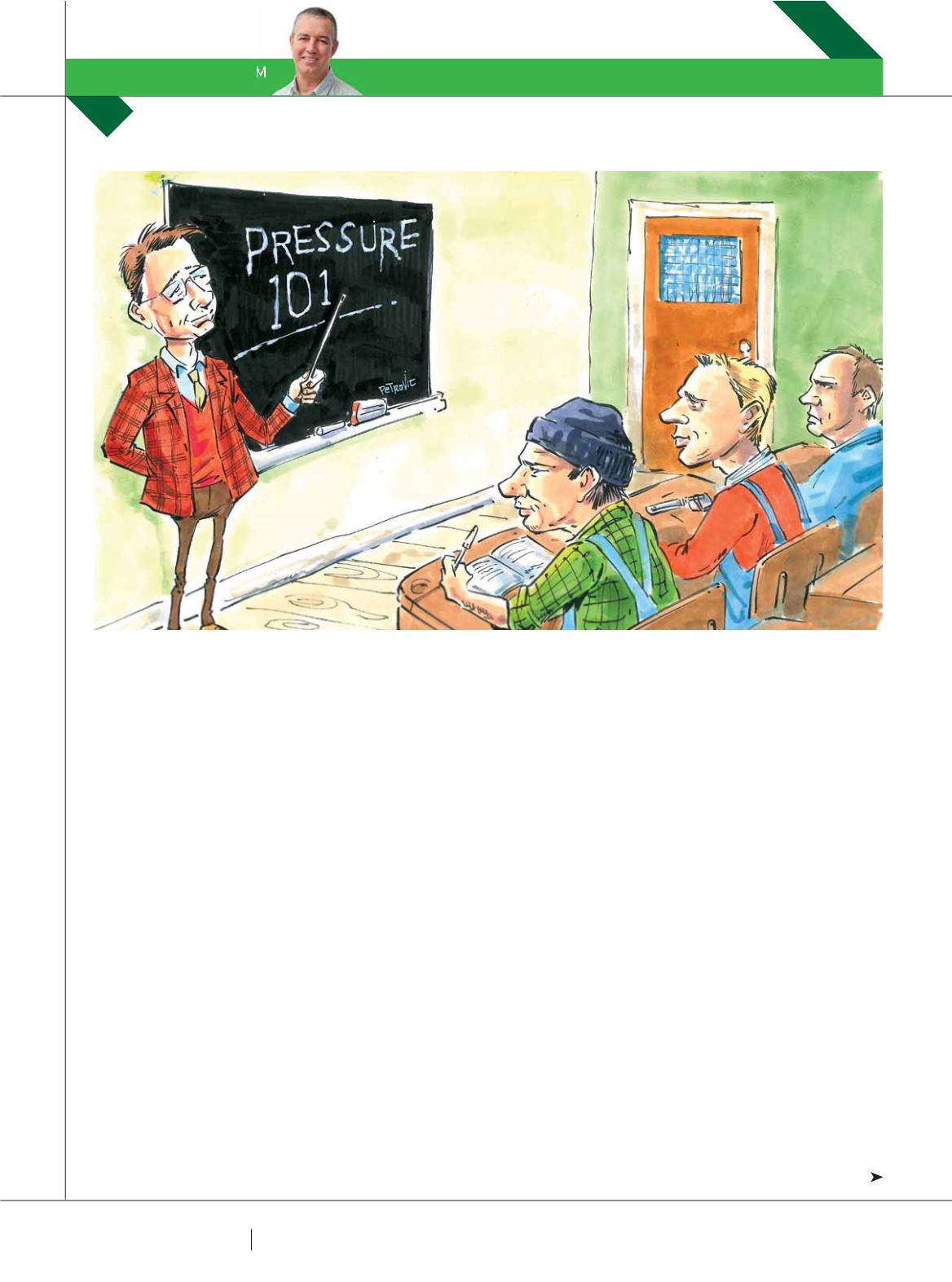

4 0
PLUMBING CONNECTION
AUTUMN 2016
FUNDAMENTAL FLUID MECHANICS –
PRESSURE
A
fter reading through a number of issues of
Plumbing
Connection
magazine I felt that while most of the
articles are very well written and interesting, some of
the content and theory may be a bit challenging for readers
without formal hydraulic or engineering qualifications to
understand. To be honest, some of it is challenging for me,
and I teach university-level hydraulics. So I thought it might
be good to write a series of articles that help explain some of
the fundamental fluid mechanics principles in simple, easy
to understand terms, for readers who are not engineers.
With that, I thank
Plumbing Connection
for the opportunity.
WHAT IS PRESSURE?
The classical definition of pressure is: “Force per unit
Area,” but what does that really mean? Force is measured
in Newtons (N), or multiples of N like kilonewtons (kN) which
are thousands of Newtons, or Meganewtons (MN) which
are millions of Newtons. The definition of a Newton is a
bit complicated to explain but basically has to do with an
object’s Mass, and its Acceleration. The Mass of an object
is wholly dependent on the number of atoms (or molecules)
the object has and this is constant (unless you change the
object in some way). The unit for Mass is the kilogram (kg).
Acceleration generally refers to the gravitational forces
acting on the object.
On Earth, all objects are subjected to the Earth’s gravity
force (this is about 9.8m/s2), which is why they have a
Weight. Please note: an object’s Mass is not the same as
its Weight. For example, the Mass of an object is the same
on the Earth, or on the Moon, or in deep space – it doesn’t
change. However, the object’s Weight is very different if it is
on Earth, or on the Moon (about 1/6th of the earth weight),
or in space (zero Weight). So for our purposes, a Force can
be thought of as the Weight of a stationary object on Earth.
Moving objects can also generate other forces but we will
discuss that at another time.
DR TERRY LUCKE
SIMPLIFIES THE CONCEPT OF FLUID PRESSURE AND EXPLAINS WHY YOU, AS PLUMBERS, NEED
TO BE AWARE OF HOW IT WORKS.
HYDRAULIC CLASSROOM
DR TERRY LUCKE
















